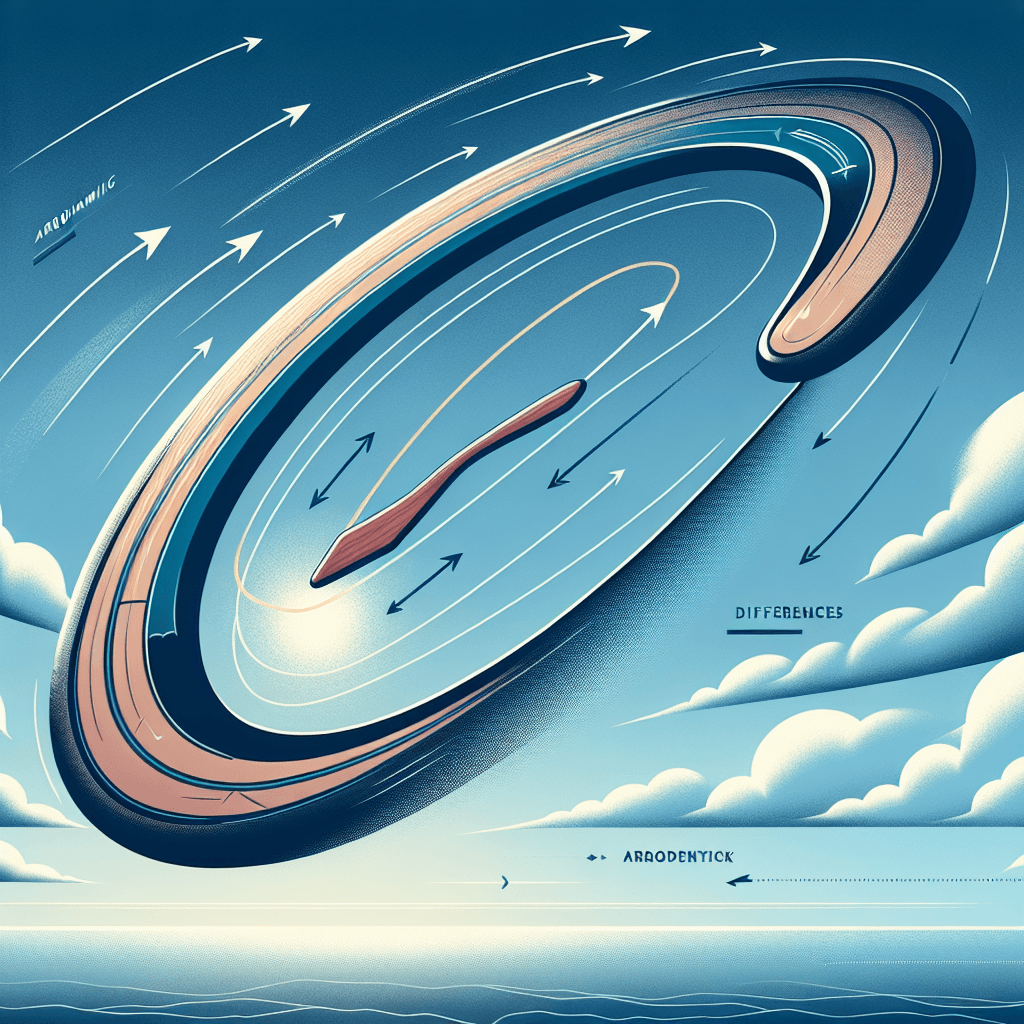How does a boomerang actually know how to come back
It's not magic, but a brilliant glitch in physics where two spinning 'wings' create an imbalance that forces the boomerang on an impossible journey right back to your hand.


Too Long; Didn't Read
TLDR: A boomerang’s wings create uneven lift as it spins through the air. The top wing moves faster and gets more lift than the bottom one. This imbalance, combined with gyroscopic physics from the spin, pushes the boomerang sideways, forcing it to travel in a circular path back to you.
The Surprising Science of Return: How Does a Boomerang Actually Know How to Come Back?
Throw a stick, and it falls to the ground. Throw a frisbee, and it flies straight. But throw a boomerang correctly, and it performs an almost magical act: it slices through the air in a graceful arc and returns right back to your hand. It seems to defy logic, but this ancient tool isn't powered by magic. Instead, its captivating flight path is the result of a brilliant and complex interplay of aerodynamic principles. So, how does a boomerang actually "know" how to come back? This post will unravel the fascinating physics behind one of the world's oldest and cleverest flying machines.
It's All in the Shape: The Aerodynamic Secret
The first clue to a boomerang’s returning ability lies in its unique shape. A returning boomerang isn't just a bent piece of wood; each of its arms, or wings, is crafted as an airfoil. This is the same fundamental shape you’d find on an airplane's wing.
- The Curved Top: The top surface of each wing is rounded.
- The Flat Bottom: The bottom surface is mostly flat.
As the boomerang spins through the air, this airfoil shape forces the air to travel faster over the curved top surface than it does across the flat bottom. According to a principle of fluid dynamics known as Bernoulli's principle, faster-moving air exerts less pressure. This pressure difference—higher pressure below the wing and lower pressure above it—creates an upward force called lift. It’s this lift that keeps the boomerang from simply falling out of the sky.
The Dynamic Duo: Lift and Gyroscopic Precession
Lift alone explains how a boomerang stays airborne, but it doesn't explain its circular journey home. For that, we need to look at the incredible power of its spin. The return flight is a result of two key physics concepts working in perfect harmony: gyroscopic stability and gyroscopic precession.
The Power of Spin (Gyroscopic Stability)
When you throw a boomerang, you impart a rapid spin on it. This spin turns the boomerang into a gyroscope. Like a spinning top that resists being knocked over, the boomerang’s spin provides stability, keeping it oriented on a consistent plane as it flies through the air. This stability is the foundation for the next, crucial step.
The Turning Trick (Gyroscopic Precession)
Here is where the real "magic" happens. As the spinning boomerang flies forward, the wing at the top of the rotation is moving in the same direction as the throw, while the wing at the bottom is moving in the opposite direction. This means the top wing is slicing through the air much faster than the bottom wing.
Since lift is directly related to airspeed, the faster-moving top wing generates significantly more lift than the slower-moving bottom wing. This imbalance of forces tries to "push" the top of the boomerang up and over.
However, because the boomerang is a gyroscope, it doesn’t just flip. Instead, it experiences a phenomenon called gyroscopic precession. This principle states that when you apply a force to a spinning object, the resulting effect occurs 90 degrees ahead in the direction of rotation. So, the upward push on the top of the boomerang results in a force that continuously pushes the leading edge of the boomerang to the side, forcing it to turn. This constant, gentle turn is what guides it in a circular path back to the thrower.
It's Not Just What You Throw, But How You Throw
Understanding the physics also explains why throwing technique is so critical. A boomerang won't return if thrown incorrectly.
- Vertical Release: It must be thrown nearly vertically (like a tomahawk), not horizontally like a frisbee. This orientation is essential for the difference in lift between the top and bottom wings to occur correctly.
- The Snap: A sharp snap of the wrist is vital to give the boomerang the high rate of spin it needs for gyroscopic stability and precession.
- Wind Matters: A light wind is actually helpful. Throwing about 45 degrees to the right of the oncoming wind (for a right-handed thrower) allows the wind to help guide the boomerang back.
Conclusion
A boomerang doesn't "know" how to come back; it is compelled to by the laws of physics. Its return is an elegant demonstration of aerodynamics, where the airfoil shape creates lift and the powerful forces of gyroscopic precession turn that lift into a steady, curving flight path. The next time you see a boomerang in flight, you can appreciate it not as a mystery, but as a masterpiece of ancient engineering. It’s a timeless reminder that our ancestors had a profound and intuitive understanding of the physical world, creating a tool that continues to fascinate and educate us to this day.
More Articles

Why do scorpions glow a brilliant blue-green color under an ultraviolet light?
A scorpion's deadly sting is famous, but its most baffling secret is the brilliant blue-green glow it hides in plain sight.

Why does adding a pinch of salt to coffee make it taste less bitter?
The secret to a smoother cup isn't more sugar, but a scientific trick that uses salt to literally block your tongue's bitterness receptors.

Why does the planet Jupiter act as a cosmic vacuum cleaner for Earth?
Our planet exists in a cosmic shooting gallery, but we have a colossal bodyguard taking the hits for us. Discover how Jupiter's immense gravity acts as a shield, protecting Earth from a relentless barrage of deadly asteroids and comets.